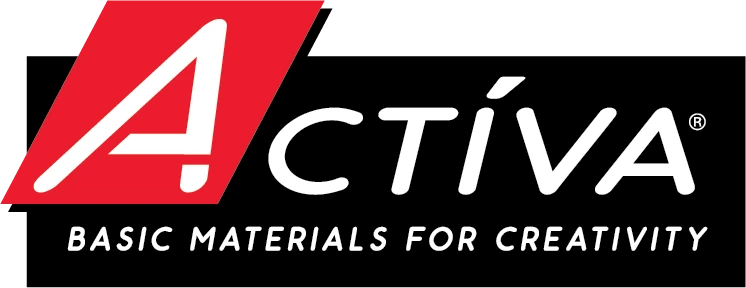Hardware Plaster Casting - Hands On Crafts for Kids 1412-02
It's time to scavenge around the garage or basement or maybe the junk drawer for old washers, keys, nails, nuts and bolts, because we are going to make a robot tile. We are actually going to do a two-part process where were we are going to make a mold and then we are going cast it. So here's what you will need: We are going to start with your hardware which like it said your nuts and bolt sand then you'll need a piece of felt for later sandpaper or scrubbing pad like this, some tacky glue, blue gel glue, some acrylic paint, your Instamold Mold making material and your Permastone casting compound. You will also need a container that fits your robot so let's first assemble our robot. I got my little pieces and parts here and you can kind a see I've been working on this one right out here in the front. Well, all you are going to do is glue your pieces on top and this is not a permanent hold. I'm just using this thick tacky glue because when it dries it will holds your pieces really well so you can cast them. So you are just going to stack and assemble your parts just like this one here. You can see I have some screws, I did some little wrenches for the arms, some other little eye screws for the eyes and… anything goes. The next thing you need to do is make sure that this robot body fits your container for your mold. You will want to leave a little bit of space around the edge so he sits down in. So let's start making a mold. I've gone ahead and measured out my mold making powder. But, the next thing you need to do is add some cool water, and you want to read the manufacturer's instructions for this because you can make your mold so it has different strength. You can have a really flimsy or a really strong mold. I'm doing the 1: 1 ratio, and as soon as you start mixing you have about 30 seconds to mix up your mold making material. I'm going to add a little bit more water. Once you have this all mixed up, don't worry if you have a few lumps, you just want to make sure you don't have any big lumps. You're gonna dump it into your container, and you'll have your mold ready to go. I've got one that I've been working on here. Once you press your pieces in their place you'll have something that looks almost like this. I have already started working on this one and pulling out my pieces, but you can see this mold super flexible and you can reuse it. So, let's start pulling out our pieces. This one actually once you push your pieces in it only takes about 30 minutes for your pieces to actually set up, and you can start using your mold which we will do in a minute. So, you have made your flexible reusable mold. Now we are going to make the casting material. So, for this we're gonna add a little bit more water, and you just need a little bit a water and then in the instructions it tells you exactly how much. You just mix this up, it's almost like making a cake to where it's pretty smooth -- I want get out a little bit more those lumps and add a little bit more water--and oops--I'm getting messy over here having too much fun. Okay, so now it's nice and smooth and you can dump this into your mold and this is where you might need a spatula. I'm guessing that he'll have a grown up helping you with this project and then you can kinda smooth this around to the edges of your tile like that. And, you can just have to go out to the edges. Then you are going to want to leave that for another 30 minutes to an hour while it sets up. The next thing that will happen is you can actually take your mold and flex it and pop out a piece just like this. This when I have actually gone ahead and started base coating but when you get yours now it's actually this whitish color on the original, but actually already base coated this tan so that we can jump into staining it. You could leave it like that but I've been staining mine blue. And, how you do that is you just watered down some blue acrylic paint like I have here. Then you to start letting that run and all the cracks and crevices of your robot and that is what makes it look so neat, and highlights all your little pieces and parts. When you finish you'll have something like this. Then you can go over it with a second color like green, and you can rub some away with your paper towel to keep it all nice. When you are finished with your painting you can back it with the piece felt, and all I did--oops--is traced around a piece of felt and cut it to fit. Then you can use your tacky glue to glue on the backing all the way out to the edges. Glue that down. Then to make it look almost like its ceramic, you can add --oops----um-- a little bit of this blue clear glue over top to make it look like glass. And that is how you make a hardware robot tile.




 />
/>
 />
/>